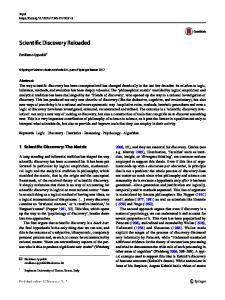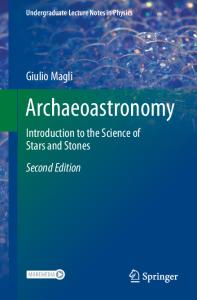Ambient Intelligence for Scientific Discovery Foundations, Theories,
Many difficult scientific discovery tasks can only be solved in interactive ways, by combining intelligent computing techniques with intuitive and adaptive user interfaces. It is inevitable to use human intelligence in scientific discovery systems: human
- PDF / 9,734,729 Bytes
- 322 Pages / 430 x 660 pts Page_size
- 12 Downloads / 324 Views
Subseries of Lecture Notes in Computer Science
3345
Yang Cai (Ed.)
Ambient Intelligence for Scientific Discovery Foundations, Theories, and Systems
13
Series Editors Jaime G. Carbonell, Carnegie Mellon University, Pittsburgh, PA, USA Jörg Siekmann, University of Saarland, Saarbrücken, Germany Volume Editor Yang Cai Carnegie Mellon University, School of Computer Science 5000 Forbes Avenue, Pittsburgh, PA 15213, USA E-mail: [email protected]
Library of Congress Control Number: 2004117781
CR Subject Classification (1998): I.2, H.2.8, H.4, H.5, I.3, C.2 ISSN 0302-9743 ISBN 3-540-24466-2 Springer Berlin Heidelberg New York This work is subject to copyright. All rights are reserved, whether the whole or part of the material is concerned, specifically the rights of translation, reprinting, re-use of illustrations, recitation, broadcasting, reproduction on microfilms or in any other way, and storage in data banks. Duplication of this publication or parts thereof is permitted only under the provisions of the German Copyright Law of September 9, 1965, in its current version, and permission for use must always be obtained from Springer. Violations are liable to prosecution under the German Copyright Law. Springer is a part of Springer Science+Business Media springeronline.com © Springer-Verlag Berlin Heidelberg 2005 Printed in Germany Typesetting: Camera-ready by author, data conversion by Olgun Computergrafik Printed on acid-free paper SPIN: 11382027 06/3142 543210
The Museum of Modern Art is perhaps one of the most interesting landmarks in Vienna, where SIGCHI 2004 Workshop of “Ambient Intelligence for Scientific Discovery” was held. The building is covered by walls and ceiling composed of thick slabs of dark basalt stone cut at intervals by narrow vertical slits, accentuating the monolithic effect of the entire volume.
Preface
For half a century, computer scientists have been working on systems for discovering lawful patterns in letters, numbers, words and images. The research has expanded into the computational study of the process of scientific discovery, producing such well-known AI programs as BACON and DENDRAL. However, autonomous discovery systems have been rarely used in the real world. While many factors have contributed to this, the most chronic difficulties seem always to fall into two categories: (1) the representation of the prior knowledge that people bring to their tasks, and (2) the awareness of new context. Many difficult scientific discovery tasks can only be solved in interactive ways, by combining intelligent computing techniques with intuitive and adaptive user interfaces. It is inevitable that human intelligence is used in scientific discovery systems. For example, the human eyes can capture complex patterns and relationships, along with detecting the exceptional cases in a data set. The human brain can easily manipulate perceptions (shape, color, balance, time, distance, direction, speed, force, similarity, likelihood, intent and well-being) to make decisions. This process consists of perception and commun
Data Loading...











